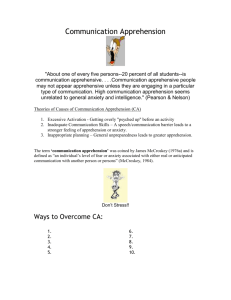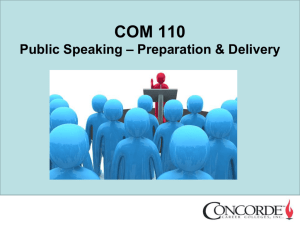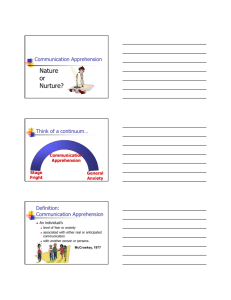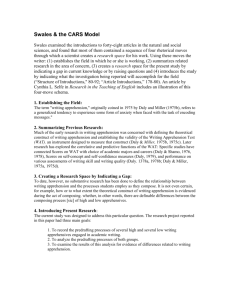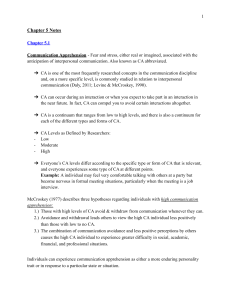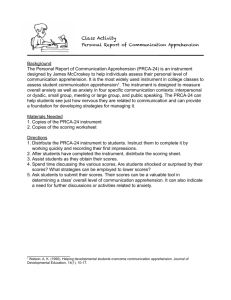Oral Communication Center Diagnosis and Assessment Program
advertisement
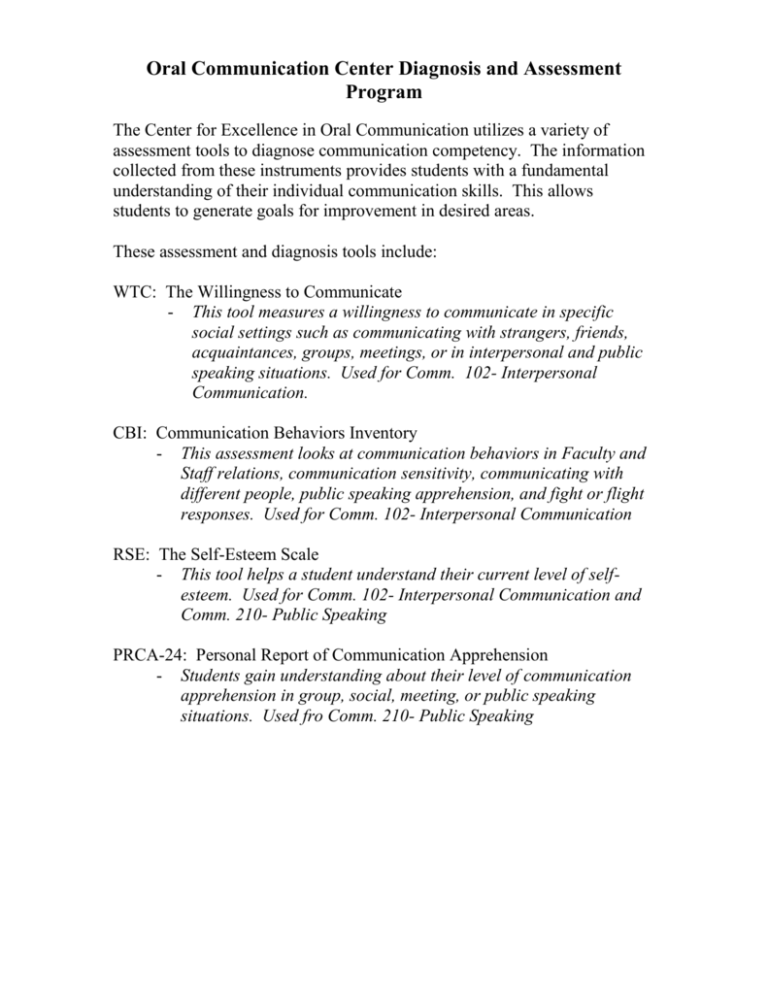
Oral Communication Center Diagnosis and Assessment Program The Center for Excellence in Oral Communication utilizes a variety of assessment tools to diagnose communication competency. The information collected from these instruments provides students with a fundamental understanding of their individual communication skills. This allows students to generate goals for improvement in desired areas. These assessment and diagnosis tools include: WTC: The Willingness to Communicate - This tool measures a willingness to communicate in specific social settings such as communicating with strangers, friends, acquaintances, groups, meetings, or in interpersonal and public speaking situations. Used for Comm. 102- Interpersonal Communication. CBI: Communication Behaviors Inventory - This assessment looks at communication behaviors in Faculty and Staff relations, communication sensitivity, communicating with different people, public speaking apprehension, and fight or flight responses. Used for Comm. 102- Interpersonal Communication RSE: The Self-Esteem Scale - This tool helps a student understand their current level of selfesteem. Used for Comm. 102- Interpersonal Communication and Comm. 210- Public Speaking PRCA-24: Personal Report of Communication Apprehension - Students gain understanding about their level of communication apprehension in group, social, meeting, or public speaking situations. Used fro Comm. 210- Public Speaking PRAC-24: A. Interpretation of sub-scores: Lowest Communication Apprehension……………. 6 More Communication apprehension than average….. 18-23 High communication apprehension…………………. 34-30 B. Interpretation of Overall Scores: Lowest Communication apprehension………… 24- Low communication apprehension…………… below 51 ‘Normal” Range…………………………………. 52-79 High communication apprehension………… 80-120 RSE: The test Scores range on a 10-40 point scale with 10 being the lowest and 40 being the highest. 36-40—High—no need to set a goal to improve student’s self-esteem 30-45—Average—Still not a strong area of concern. Be aware, though, of the scores towards the lower end of this scale. 29 and below—lower than average—should suggest goal setting for student to improve their self-esteem. If the score is 24 or less, the TA should tactfully discuss the score with the student and assess the student’s needs. WTC: The test scores range on a scale from 0-100, broken into categories of varying communication situations. Low scores suggest areas that students should consider setting goals. 80-100—high willingness to communicate—no real need to establish goals based on the WTC scale. Should still go over scores with student. 70-79—average area—look at scores for possible goals. If the lowest score(s) on the test are in this range, then attempt to use for goal setting. 69 and below—below average—should be looked at and discussed for goal setting. CBI: This instrument serves as a representation of the student’s communication behaviors—either already being utilized or the ability to perform these behaviors. Ideally after the course is completed the student will have obtained the knowledge and skills to further theses skills and thus increase (or decrease when needed) their communication behaviors. *Means of the scoring—students should be scoring close to the mean. Faculty and Staff--3.494—If below ask student’s how they feel on subject (may be that they haven’t had to talk to faculty and staff) Sensitivity-- 3.108-- if below 2.5 they may need to be more aware of others’ emotions and reactions. If above 4.5 may be too sensitive and can’t get things said Different people--2.659—if around 1.8-2.0 it probably reflects that they talk to or approach only specific types of people. May want to work on approaching different people. Public speaking—2.043—even if low it is hard to set this as a goal in an interpersonal class Fight or flight -4.211- if above 6.0 may be too aggressive and if below 3.5 may be too passive. Ideal is to be close to the mean. Total—3.081
